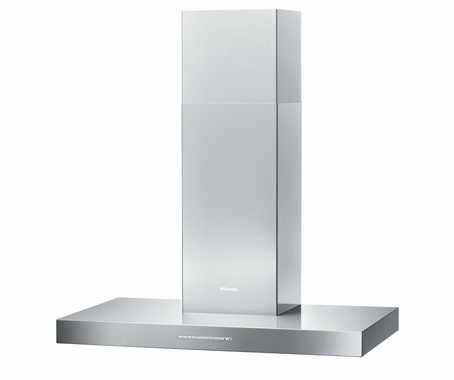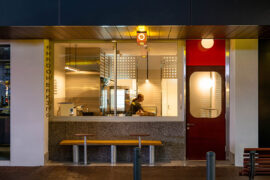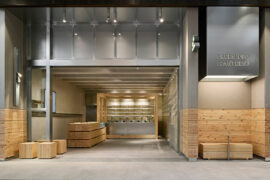Miele Australia introduces the DA 6390 rangehood.
April 3rd, 2012
With the cost of living continuing to rise and energy efficiency more important than ever.
The considerable savings are made possible by Miele’s new ECO package that consists of a suite of energy efficient features including intelligent PowerManagement, innovative new digital current (DC) motor, an inspired mains switch, and new LEDs for downlighting. The intelligent PowerManagement feature enabling electronic controls on the ECO package to automatically save power without any input from the user ensures the rangehood does not operate at a high power setting for longer than necessary.
Depending on the previous power output, the machine switches down to the next lower setting automatically after a certain period of time, ultimately switching to standby. Should the user forget to switch the machine off this, too, is done automatically. A stand-out energy efficient feature is the new DC motor. Without compromising on performance or air capacity, the DC motor is far more efficient than the conventional alternating current (AC) counterpart. Depending on the power setting the DA 6390 requires 40 to 80 per cent less electricity!

Although the standby consumption of Miele domestic appliances lies below 1 Watt, the inclusion of a mains switch allows the DA 6390 to be completely disconnected from the mains supply during longer periods of inactivity, further reducing un-necessary energy consumption and saving precious Australian resources.
Illuminating these impressive new eco-friendly features, as well as the cooktop below, are innovative LEDs. Developed exclusively for Miele rangehoods by German lighting specialist Hella, these high performance LED lights use only 2 Watts of energy per hour instead of the usual 20 watts required for standard halogen lamps.
Additionally the high-performance LED lights meet Miele stringent requirements of optimum cooktop illumination, as well as a 20 year design life.
A very special feature of Miele’s LEDs is the warm, natural light tone that ensures uniform hob illumination. The new downlights are flush-fitted and integrated into a stainless steel bezel featuring the Miele logo.
$2,999
Miele Australia
miele.com.au
INDESIGN is on instagram
Follow @indesignlive
A searchable and comprehensive guide for specifying leading products and their suppliers
Keep up to date with the latest and greatest from our industry BFF's!

Sydney’s newest design concept store, HOW WE LIVE, explores the overlap between home and workplace – with a Surry Hills pop-up from Friday 28th November.

For those who appreciate form as much as function, Gaggenau’s latest induction innovation delivers sculpted precision and effortless flexibility, disappearing seamlessly into the surface when not in use.

Let’s find out what’s in store for design in 2025 from Gensler.
The internet never sleeps! Here's the stuff you might have missed

Working within a narrow, linear tenancy, Sans Arc has reconfigured the traditional circulation pathway, giving customers a front row seat to the theatre of Shadow Baking.

Hecker Guthrie brings a natural, material-led design to Green Cup’s new Chadstone store, pairing pine, steel and glass with a grab-and-go layout inspired by the brand’s fresh, organic ethos.